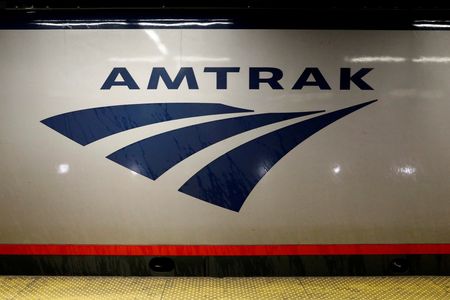By David Shepardson
WASHINGTON (Reuters) – Amtrak CEO Stephen Gardner said on Tuesday the U.S. passenger railroad expects traffic to get back to pre-pandemic levels even as it projects about $800 million in losses for the current budget year.
Gardner told a U.S. House subcommittee that ridership in the seven months ending April 30 was 84% of 2019 levels and ticket revenues were 95% of what they were before the pandemic, as ticket prices are up about 30% since then. Passenger capacity measured by available seats during April remained 15% lower than 2019 systemwide because trains were running less frequently and there were equipment shortages, he added.
Previously, Amtrak reported an adjusted operating loss of $884.9 million for 2022 and said it aims to break even in the coming years.
“Financial performance is not Amtrak’s sole objective,” Gardner said. “If it were, we would do what … the last private owner of the Northeast Corridor did: declare bankruptcy; get rid of our obligations to maintain the infrastructure and operate passenger trains; and go into the real estate business with the property and assets we own along the corridor.”
On Monday, Amtrak said it applied for $8 billion in government grants to modernize bridges, tunnels and other aging infrastructure along the busy Washington-to-Boston corridor, expanding service and building a new station in Arlington, Virginia.
Congress approved $66 billion for rail as part of the 2021 infrastructure bill, with Amtrak receiving $22 billion. The bill also sets aside $36 billion for competitive grants, which Amtrak is looking to tap to help fund replacement or rehabilitation of tunnels, bridges and other aging infrastructure.
Gardner said a new tunnel will reduce Washington to Baltimore trip time to less than 30 minutes.
Amtrak wants to double ridership nationwide by 2040 after its ridership grew 45% from 2003 to 2019 to 32.3 million riders.
Gardner noted that half of the 46 states Amtrak serves have minimal service. Florida, Ohio and Arizona, the Mountain West and Gulf Coast are served by long distance trains that provide no more than one round trip a day.
Major cities like Nashville, Columbus, Phoenix and Las Vegas have no Amtrak service.
(Reporting by David Shepardson; Editing by David Gregorio)





